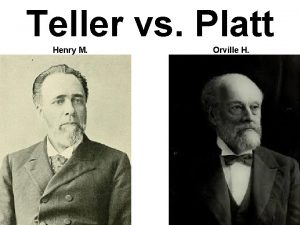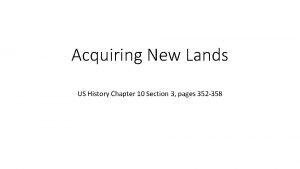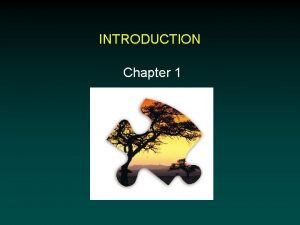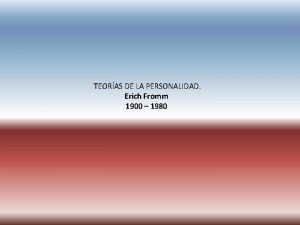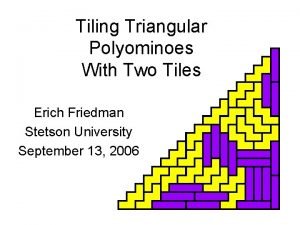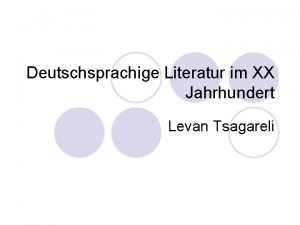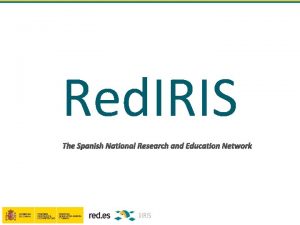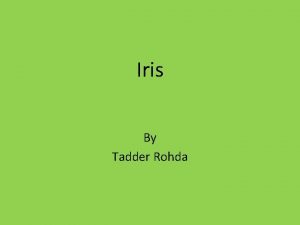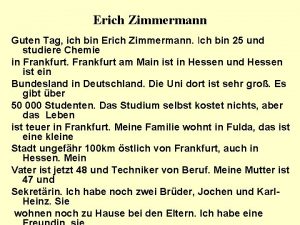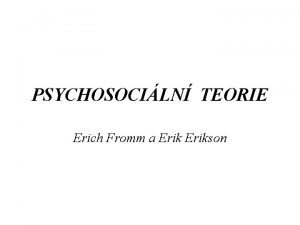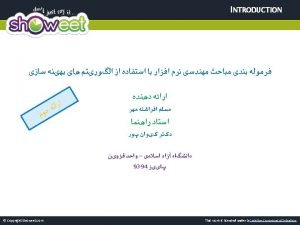Iris Dataset Erich Smith Coleman Platt Summary Introduced















- Slides: 15

Iris Dataset Erich Smith Coleman Platt

Summary • Introduced by statistician Ronald Fisher in 1936 • Widely used in machine learning examples • Three species of Iris flower: • Iris-setosa • Iris-versicolor • Iris-virginica • Four continuous attributes: • Length & width of petals (cm) • Length & width of sepals (cm) • 150 total data points • 50 from each species

Questions to Answer • How to distinguish between the three species based on measurements of their petals and sepals • Accurately classify species that have multiple crossover attributes

Challenges • Clustering not a good candidate due to attribute crossover • Iris-setosa is linearly separable, but the other two are not • Converting original data to format compatible with algorithm • Deciding best cut off between training and test data

Methods • Classification algorithms such as decision tree perform well with this data set • We use C 4. 5 • C 4. 5 is easy to use and interpret, and accurate even when given very small training data set

Results

Results

Results

Results

Results

Results

Results • Predictably, the program is more accurate when given bigger percentage of data set as training data • However, still very accurate when given only 10 training cases, producing only 6. 7% error rate in test data • Error rate stays approximately < 10% until given 50% or more of the data as training data

Related Work • Comparing Classification Methods by Derek. Elliot • 2 methods: Linear Regression v. s. Random Forest • Linear Regression was a better fit for the data by a small margin • Random Forest was off because of cleanliness of the data • Linear regression correctly predicts that our decision tree was based on the pedal size.

Disciussion • The data mining methods we used were able to satisfy our questions • More data needed, combine data classification methods • Making data compatible with algorithm, not simple

References • Compare classification methods: 2016. https: //www. kaggle. com/saywhat 1/d/uciml/iris/compareclassification-methods/notebook. Accessed: 4/27/2016 • C 4. 5 Tutorial: 1992. http: //www 2. cs. uregina. ca/~dbd/cs 831/notes/ml/dtrees/c 4. 5/tutor ial. html. Accessed: 4/23/2016 • Iris Data Set: 1988. http: //archive. ics. uci. edu/ml/datasets/Iris. Accessed: 4/23/2016
 등고선
등고선 Teller and platt amendments
Teller and platt amendments Platt amendment significance
Platt amendment significance Puttiplat surgery
Puttiplat surgery Bacons rebellion outcome
Bacons rebellion outcome Platt strong inference
Platt strong inference Personalidad erich fromm
Personalidad erich fromm Erich paul remark
Erich paul remark Erich fromm haben oder sein
Erich fromm haben oder sein Erich fried biographie
Erich fried biographie Erich gamma
Erich gamma Erich friedman
Erich friedman Erich mueller cornell
Erich mueller cornell Kasih menurut para ahli
Kasih menurut para ahli Erich maria remarque současníci
Erich maria remarque současníci Gebranntes kind gedicht
Gebranntes kind gedicht

